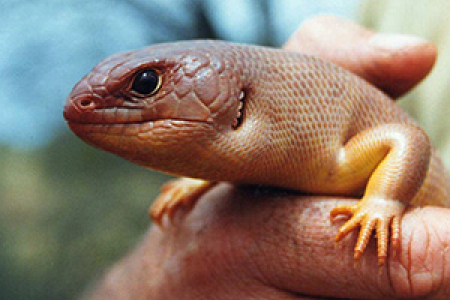Science student captures python surprise on camera
A Charles Darwin University reptile researcher got a surprise of a slithery kind while studying a rare skink near Uluru recently.
Bachelor of Science student Jenna Ridley said she discovered several woma pythons hiding in the burrows of great desert skinks, the subject of her honours thesis.
“I saw several of them going in and out of the burrows while reviewing my camera data,” Ms Ridley said.
“There may have been as many as 10, although I was unable to tell from the camera whether it was the same snake or different ones.”
Ms Ridley said the sight of the python was a surprise in the first instance, although she knew from scientific literature that it was a possibility.
“They may use the burrows to thermo-regulate (adjust body temperature), or to eat the skinks, or they may use the entrance as a hiding place from which to strike out at prey passing by.
“But I’m not sure; my focus was on the great desert skink (Liopholis kintorei) or tjakura, as it is known in Pitjantjatjara.
“It is the only one of 74 reptile species in Uluru-Kata Tjuta National Park listed as vulnerable and is regarded as important for cultural and ecological reasons.”
Ms Ridley said research had shown that its population had declined, especially in areas affected by fire.
“The aim of my study is to determine tjakura’s relationship and potential response to fire by assessing its activity levels, distribution and abundance in areas with different fire histories.
“My findings will help managers make future decisions about the conservation of the great desert skink in relation to fire management within the park.”
Ms Ridley said she trekked for 90 km on three trips to the national park over a 10-week period last summer.
“It was all done early in the morning to avoid the worst of the heat,” she said.
“I surveyed 60 known burrows and found a further 11 that had not been recorded, which was exciting.
“Their distinct tracks, external latrines and multiple entrances to extensive burrow systems were the tell-tale signs of their presence.”
Ms Ridley said she set up a number of motion-sensor cameras at 12 burrow entrances.
“We recorded foxes, mulgara, lots of goannas and the pythons, as well as thousands of photos of the rare skinks,” she said.
